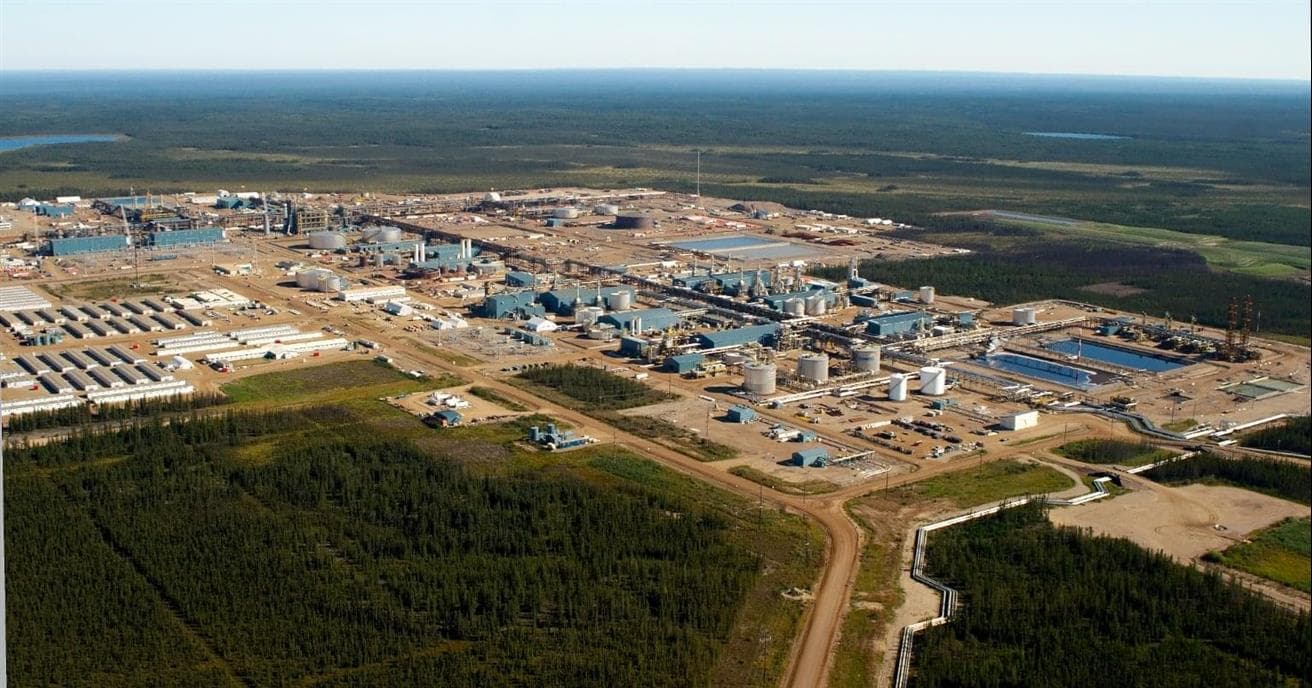Clint Starr, an operator at Suncor’s Firebag in situ facility, remembers the early days very clearly. He started his career with Suncor in 2002 and has held various positions within operations over the last 21 years, including work on the Firebag pilot site.
“It was a different site back then,” Clint remembers of Firebag. “We would drive there from our homes in our own vehicles—there were no flights then.”
It was also a much smaller facility than it is today, with a capacity to produce 30,000 barrels per day. Back then, Firebag was the third commercial facility in Alberta to use the steam-assisted gravity drainage (SAGD) method of oil sands recovery. SAGD involves drilling wells to inject steam, which extracts bitumen to the surface for processing.
Over the last two decades, the facility has evolved to have a production capacity of 215,000 barrels per day, with over 600 wells and employs an average of 1,000 people each day. Firebag also delivers enough electricity back to Alberta’s power grid to power about half the homes in Calgary through its five co-generation units.
However, Firebag, which takes its name from the leather bag traditionally used by Indigenous Peoples to carry hot coals for fire-starting purposes, is more than an oil sands operation, it’s also home to thousands of workers for the duration of their shift. The site is about 120 kilometers north of Fort McMurray and is accessed primarily by plane through the Firebag airport and bus today.
“It’s like a little village,” adds Clint. “It’s the people that make it a great place to work. When you’re at camp you’re there 24/7, so you’re working with the same people every day, but you’re also eating with them, working out with them and enjoying your recreational activities with them. They become your friends.”
And in times of need, Firebag has been there for the Fort McMurray Wood Buffalo community. In 2016, during the wildfires, Firebag provided temporary shelter for evacuees and their furry family members.
Brian Barber, an electrical and instrumentation lead at Firebag, who’s also been at the site since its pilot site days, remembers the wildfire support well: “Thousands of people and their pets flew out of the Firebag airport during the 2016 fires. It was quite something to see dogs running in the halls of the lodge.”
We’ve seen strong performance at Firebag with back-to-back production records in the last quarter of 2022 and the first quarter of this year, which Adam Albeldawi, Vice President of In Situ, attributes to the people working there.
“A key component to Firebag’s success is the continuous improvement mindset of the broader in situ team,” explains Adam. “From our frontline team members to those across the supporting functions who continually push for ways to improve our performance and the overall experience on site. This mindset, coupled with our focus on select future development, will enable us to be successful at Firebag for decades to come.”
Firebag remains the second largest in situ facility in the industry with its product going to our Base Plant, Syncrude and Edmonton refinery operations for processing and sold to market.
Old school
“It was old school back in the early days with payphones and satellite Internet, satellite TV with four channels, and the newspaper delivered to site was from the day before—by the time we got it, it was yesterday’s news,” adds Clint.
Among the list of changes to the site since 2003 are the living facilities including a 1,512-room lodge, fitness centre, baseball diamond, high-speed Internet, a recreation area, a general store, a kitchen with a diverse menu and other amenities to help the residents feel like home while there.


.jpeg?mw=304&modified=20220203222513&hash=46B0DD2F0D96ABDB58CE33EC7B9643C5)
.jpg?mw=304&modified=20221130173317&hash=57C9C7EDE761D075B9902F6ACD52E2C2)